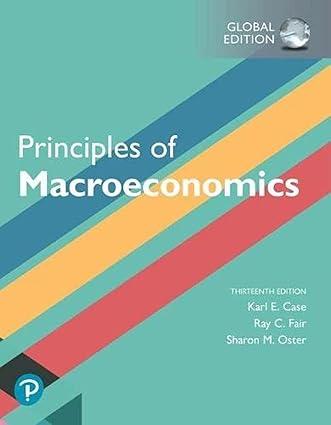During festive seasons, such as Christmas, food prices usually rise. The 2017 Christmas was particularly expensive for
Question:
During festive seasons, such as Christmas, food prices usually rise. The 2017 Christmas was particularly expensive for Britons. The British Retail Consortium reported that Christmas dinner was 16 percent more expensive in 2017 compared to the previous year. While the overall price level in the United Kingdom rose by 3 percent in December 2017, food prices increased by 4.2 percent. Among the sharpest increases was a 40 percent rise in the price of butter, an 8.5 percent rise in the price of fish, an 8.5 percent rise in the prices of beverages, a 5.7 percent rise in vegetable prices, and a 5.6 percent rise in dairy prices. The Office for National Statistics (ONS), the official statistical agency in the United Kingdom, reports that this was the highest level of food prices since 2013. Moreover, the ONS cautioned that food inflation is higher than 4.2 percent due to “shrinkflation,” which means that instead of raising prices during the festive season, producers reduced the weight and size of 2,500 products, out of which 80 percent were food items. Changes in tastes, income, wealth, expectations, or prices of other goods and services causes demand to change, while changes in costs, input prices, technology, or prices of related goods and services causes supply to change. Hence, any changes in equilibrium price can be caused either by changes in demand or in supply. As such, an increase in equilibrium price can be caused by either an increase in demand or a fall in supply.
The surge in United Kingdom’s food prices is due to the increase in the demand for food items as families stock up food items and other products for the Christmas Eve dinner. This shifts the demand curve to the right, increasing the equilibrium price and quantity demanded as shown in Figure (a). But there could be factors other than the rise in demand that affect prices.
On the supply side, the increase in food prices is mainly due to the depreciation of the British pound since the Brexit referendum on June 23, 2016. A weaker pound has increased the cost of imported food items, shifting the supply curve to the left, further raising the equilibrium price level and reducing the equilibrium quantity as shown in Figure (b). Both forces put together have resulted in a simultaneous rise in prices, but what about the net effect on equilibrium quantity?
Recent market research shows that during the festive season of 2017, British consumers spent £1 billion more on food in comparison to the 2016 Christmas. The report explains that the higher food prices left people with less money for other items, so the prices of non-food items have also risen. As higher food prices squeezed the wages of lower income groups, consumer purchases of non-food products fell by 0.1 percent in December 2017 in comparison to the previous month. This was despite discounts on non-food goods such as furniture and clothing. Thus, the rightward shift in the demand curve outweighed the leftward shift in the supply curve, causing an overall increase in equilibrium quantity.

Question
Using diagrams, explain what happens to equilibrium price and quantity if the shift in the supply curve outweighs that of the demand curve due to British producers getting bulk export orders.
Step by Step Answer:

Principles Of Macroeconomics
ISBN: 9781292303826
13th Global Edition
Authors: Karl E. Case,Ray C. Fair , Sharon E. Oster





